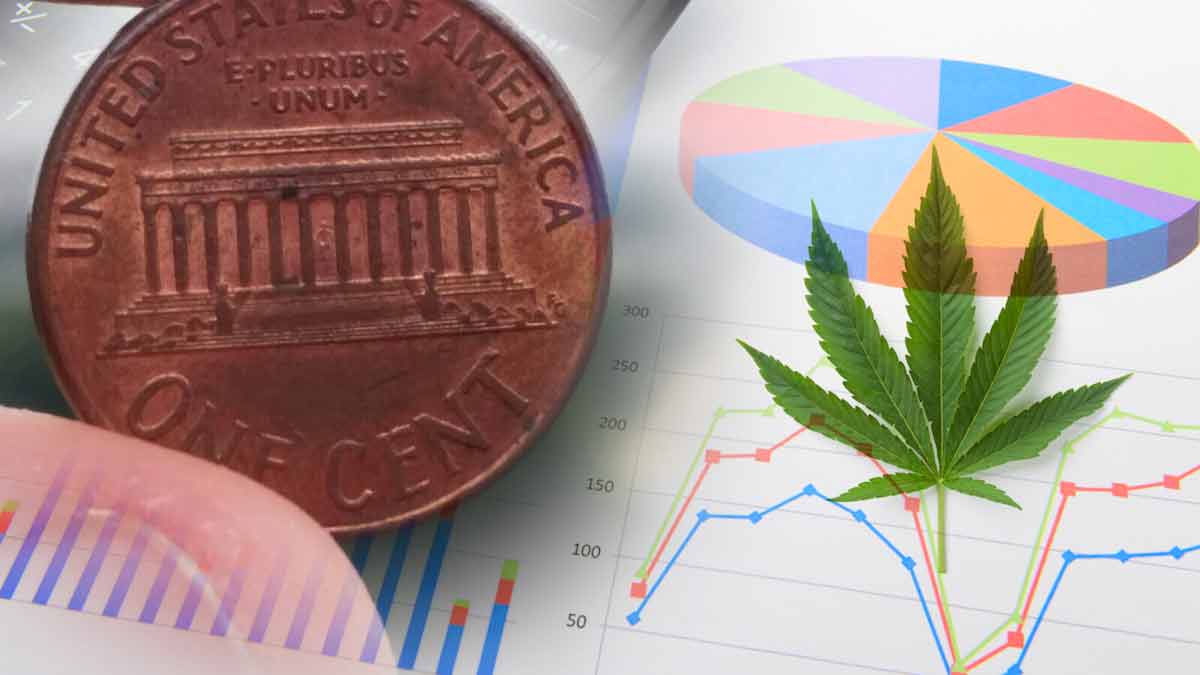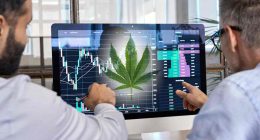Stevia Corp. Names Famed Cannabis Researcher and Former Indiana University Professor Paul Mahlberg to Its Advisory Panel
Dr. Mahlberg obtained one of only two Drug Enforcement Administration (DEA) Schedule 1 research licenses to pursue studies on Cannabis in the United States spanning a period of 33 years from 1970-2003. During that time he accumulated one of the most extensive seed banks in the world with over 200 strains (varieties) of Cannabis from worldwide sources, which were cultivated in secure greenhouses. The studies are available in over 30 scientific publications on Cannabis.
Dr. Mahlberg is a Professor Emeritus of Indiana University and was an active professor in the Botany department of the University until 1994 after which he continued his research on Cannabis with visiting faculty and maintained his laboratory until 2003. Dr. Mahlberg received his Ph.D. in Botany from the University of California, Berkeley and his M.S. and B.S. degrees in Botany from the University of Wisconsin, Madison.
Over the years, Dr. Mahlberg has been a sought-after consultant as one of the leading experts on the cannabis plant in North America and throughout the world. Dr. Mahlberg has been a consultant to the School of Pharmacy at the University of Mississippi in its Cannabis program. He also consulted the United Nations Industrial Development Organization, Vienna, on the processing of raw opiate material.
Dr. Mahlberg’s studies examined the growth response and distribution of individual cannabinoids in all of the collected strains under controlled greenhouse conditions to interpret taxonomic, chemical and evolutionary relationships and identified the sites of cannabinoid accumulation and distribution in glands throughout the plant. Different techniques and instrumentation were used such as gas-liquid, liquid-liquid and other chromatographic techniques as well as various forms of microscopy, light, scanning and thin section and THC antibody autoradiography techniques and micromanipulation to localize cannabinoids at the cellular level to chemically identify and analyze the cannabinoids utilizing standards (cannabidiol, tetrahydrocannabinol, cannabichromene, cannabinol) provided by the National Institute on Drug Abuse for chromatographic analyses.
Dr. Mahlberg’s work has also been the subject of articles in many national publications such as High Times Magazine focusing on his research to determine optimal harvest times to capture the highest levels of specific cannabinoids such as THC.
Dr. Mahlberg commented, “It is my pleasure to join the Stevia Corp Advisory Panel with the desire to incorporate the nutritional and medicinal components of hemp into products which promote a healthy lifestyle.”
George Blankenbaker, President of Stevia Corp added, “During my time at Indiana University I walked past the Botany building many times never knowing what studies were being conducted in the greenhouses perched on top of the building. It was a great pleasure to finally meet Dr. Mahlberg and discuss the relevance of his research and realize our mutual excitement about the many potential benefits of the cannabis plant and the mutual desire to help commercialize the plant so that those benefits can be realized.”
To learn more about Dr. Malhberg’s research, please click the following link:
https://www.realhemp.com/cannabis-researcher-paul-mahlberg-joins-stevia-corps-advisory-panel
About Stevia Corp. (OTCQB: STEV)
Stevia Corp. is a farm management company and healthcare company focused on developing highly nutritional, high value products through proprietary plant breeding, excellent agricultural methodologies and innovative post-harvest techniques. Stevia Corp invests in R&D and IP acquisition and manages its own propagation, nursery and plantations as well as provides services to contract growers and other industry growers. Stevia Corp was founded on the principal of implementing socially responsible, sustainable, quality agribusiness solutions to maximize the long-term efficient production of nutritional crops. For additional information please visit: www.steviacorp.us.
About the Hemp Industry Sector
Industrial Hemp is a crop that can be grown for food and non-food purposes. As a result of its numerous nutritional benefits, many new food products containing hemp seed and its oil are finding their way into the marketplace, including pasta, tortilla chips, salad dressings, snack products and frozen desserts. Hemp seed contains a complete protein and the seed oil is the richest source of essential fatty acids (Omega-6 and Omega-3) with the perfect ratio of 3:1. Hemp seed oil is also used in nutraceuticals and health care products.
As a fiber source, hemp is undergoing rapid growth as a natural fiber in everything from clothing and textiles to automotive composites. The fiber is also gaining popularity as insulation and other building materials.
The Hemp Industries Association (HIA) estimated that the 2014 retail sales value of hemp food and body care products in the United States was $200 million. When clothing, paper, auto parts, building materials and various other products are included, the HIA estimates that the total retail value of hemp products sold in the U.S. in 2014 to be at least $620 million. Total hemp retail sales in the U.S. have continued to grow steadily and the annual percent growth is estimated by the HIA to have progressed from 7.3% (2011), to 16.5% (2012), to 24% (2013), to 21.2% in 2014.
Industrial Hemp is distinct from marijuana and is defined as the plant Cannabis sativa L. and any part of such plant, whether growing or not, with a delta-9 tetrahydrocannabinol concentration of not more than 0.3 percent on a dry weight basis.
Although it is legal to import and sell industrial hemp products in the U.S., it is not yet legal to commercially grow industrial hemp in the U.S. The 2013 farm bill was signed into law in February 2014 and contained a hemp amendment, Sec. 7606 Legitimacy of Industrial Hemp Research, which allows states that have already legalized the crop to cultivate hemp within the parameters of state agriculture departments and research institutions.
In January of 2015, The Industrial Hemp Farming Act was introduced in the House and Senate, H.R. 525 and S. 134 respectively. If passed, the bill would remove all federal restrictions on the cultivation of industrial hemp, and remove its classification as a Schedule 1 controlled substance.
About Cannabinoids
There are at least 85 different cannabinoids that have been identified in the cannabis plant. The most notable cannabinoid is tetrahydrocannabinol (THC), which is the primary psychoactive compound in marijuana (a variety of cannabis containing high levels of THC). Cannabidiol (CBD) is another major constituent of the plant and is a primary compound in Industrial Hemp (a variety of cannabis containing less than 0.3% THC on a dry weight basis).
Cannabinoids are a class of diverse chemical compounds that act on cannabinoid receptors. At present there are two known types of cannabinoid receptors, termed CB1 and CB2, with mounting evidence of more. The human brain has more cannabinoid receptors than any other G protein-coupled receptor type. CB1 receptors are found primarily in the brain and CB2 receptors are predominantly found in the immune system or immune-derived cells. Ligands for these receptor proteins include the endocannabinoids (produced naturally in the body by humans and animals), the phytocannabinoids (found in cannabis and some other plants), and synthetic cannabinoids (manufactured artificially).
In October 2003, U.S. patent U.S. Patent 6,630,507 entitled “Cannabinoids as antioxidants and neuroprotectants” was assigned to “The United States Of America As Represented By The Department Of Health And Human Services.” The patent was filed in April 1999 and listed as the inventors: Aidan J. Hampson, Julius Axelrod, and Maurizio Grimaldi, who all held positions at the National Institute of Mental Health (NIMH) in Bethesda, MD, which is part of the National Institutes of Health (NIH), an agency of the United States Department of Health and Human Services (HHS). The patent mentions cannabidiol’s ability as an antiepileptic, to lower intraocular pressure in the treatment of glaucoma, lack of toxicity or serious side effects in large acute doses, its neuroprotectant properties, its ability to prevent neurotoxicity mediated by NMDA, AMPA, or kainate receptors; its ability to attenuate glutamate toxicity, its ability to protect against cellular damage, its ability to protect brains from ischemic damage, its anxiolytic effect, and its superior antioxidant activity which can be used in the prophylaxis and treatment of oxidation associated diseases.
Oxidative associated diseases include, without limitation, free radical associated diseases, such as ischemia, ischemic reperfusion injury, inflammatory diseases, systemic lupus erythematosus, myocardial ischemia or infarction, cerebrovascular accidents (such as a thromboembolic or hemorrhagic stroke) that can lead to ischemia or an infarct in the brain, operative ischemia, traumatic hemorrhage (for example a hypovolemic stroke that can lead to CNS hypoxia or anoxia), spinal cord trauma, Down’s syndrome, Crohn’s disease, autoimmune diseases (e.g. rheumatoid arthritis or diabetes), cataract formation, uveitis, emphysema, gastric ulcers, oxygen toxicity, neoplasia, undesired cellular apoptosis, radiation sickness, and others. Cannabinoids are believed to be particularly beneficial in the treatment of oxidative associated diseases of the CNS, because of the ability of the cannabinoids to cross the blood brain barrier and exert their antioxidant effects in the brain. It is believed that pharmaceutical composition of cannabinoids can be used for preventing, arresting, or treating neurological damage in Parkinson’s disease, Alzheimer’s disease and HIV dementia; autoimmune neurodegeneration of the type that can occur in encephalitis, and hypoxic or anoxic neuronal damage that can result from apnea, respiratory arrest or cardiac arrest, and anoxia caused by drowning, brain surgery or trauma (such as concussion or spinal cord shock).
Notice Regarding Forward-Looking Statements
This news release contains “forward-looking statements” as that term is defined in Section 27A of the United States Securities Act of 1933, as amended and Section 21E of the Securities Exchange Act of 1934, as amended. Statements in this press release, which are not purely historical, are forward-looking statements and include any statements regarding beliefs, plans, expectations or intentions regarding the future. Such forward-looking statements include, among other things, incorporating components of hemp into products that promote a healthy lifestyle, the potential benefits of the cannabis plant, the commercialization of the cannabis plant, annual retail value of hemp products sold in the U.S., growth of industrial hemp product industry, potential uses of cannabinoids for treatment of various illnesses and diseases, product development and business strategy. Actual results could differ from those projected in any forward-looking statements due to numerous factors. Such factors include, among others, the inherent uncertainties associated with new projects and development stage companies. These forward-looking statements are made as of the date of this news release, and we assume no obligation to update the forward-looking statements, or to update the reasons why actual results could differ from those projected in the forward-looking statements. Although we believe that any beliefs, plans, expectations and intentions contained in this press release are reasonable, there can be no assurance that any such beliefs, plans, expectations or intentions will prove to be accurate. Investors should consult all of the information set forth herein and should also refer to the risk factors disclosure outlined in our annual report on Form 10-K for the most recent fiscal year, our quarterly reports on Form 10-Q and other periodic reports filed from time-to-time with the Securities and Exchange Commission.
Stevia Corp. Investor Relations
Email: ir@steviacorp.com
Tel: +1-888-250-2566
Web: www.steviacorp.com
MAPH Enterprises, LLC | (305) 414-0128 | 1501 Venera Ave, Coral Gables, FL 33146 | new@marijuanastocks.com








